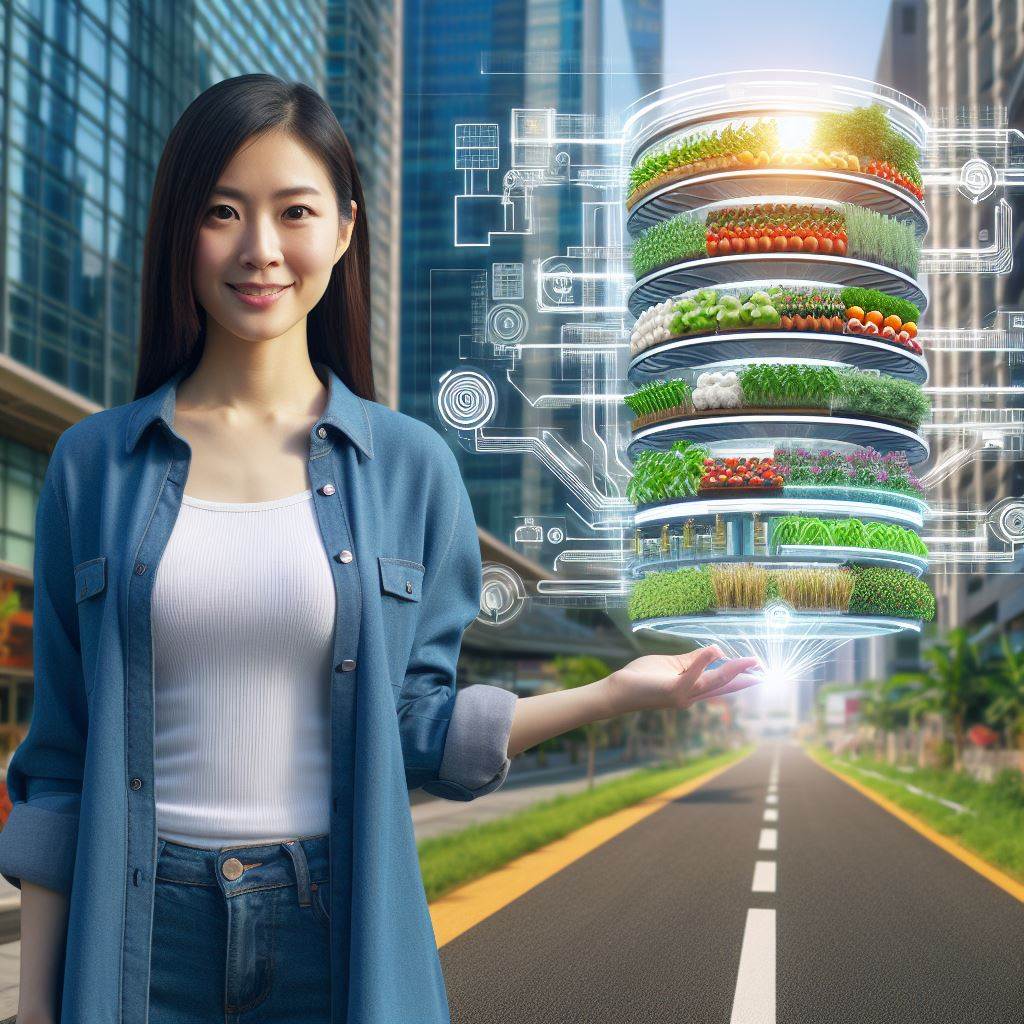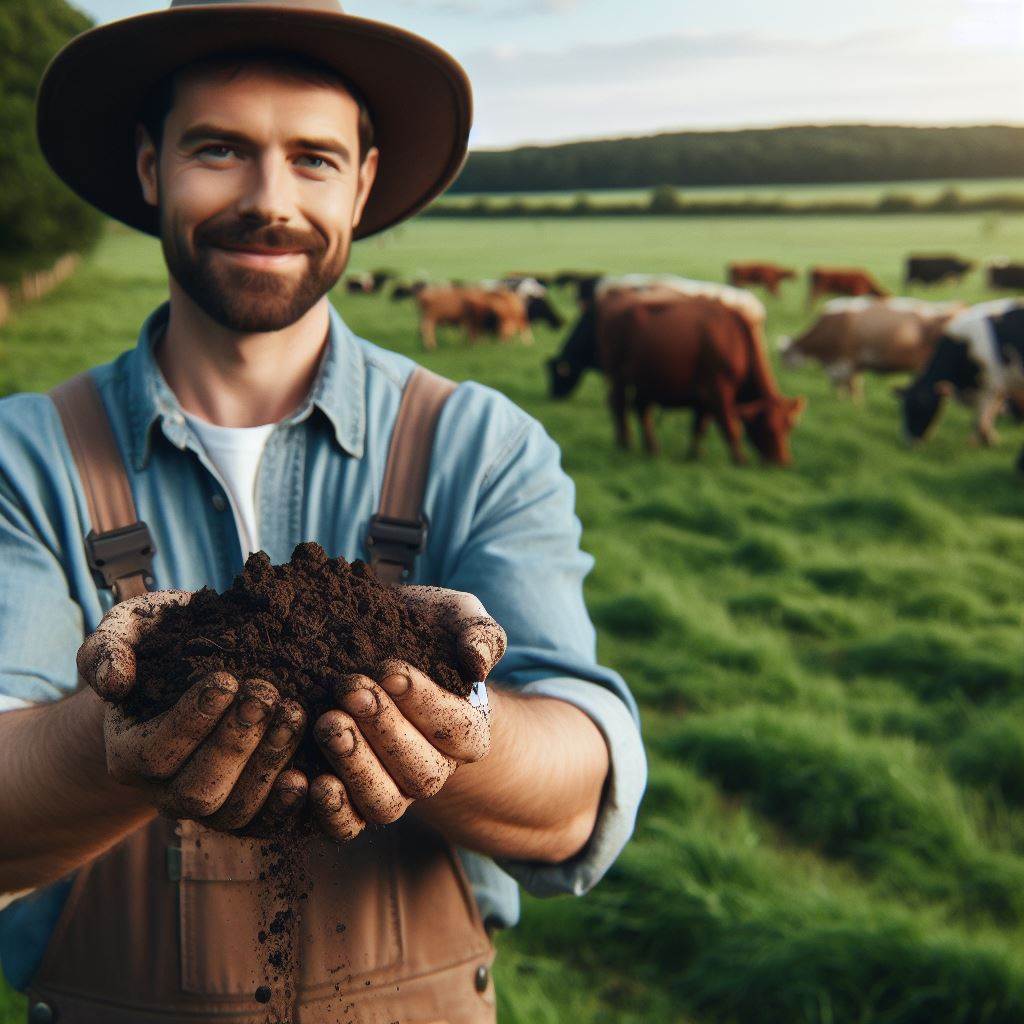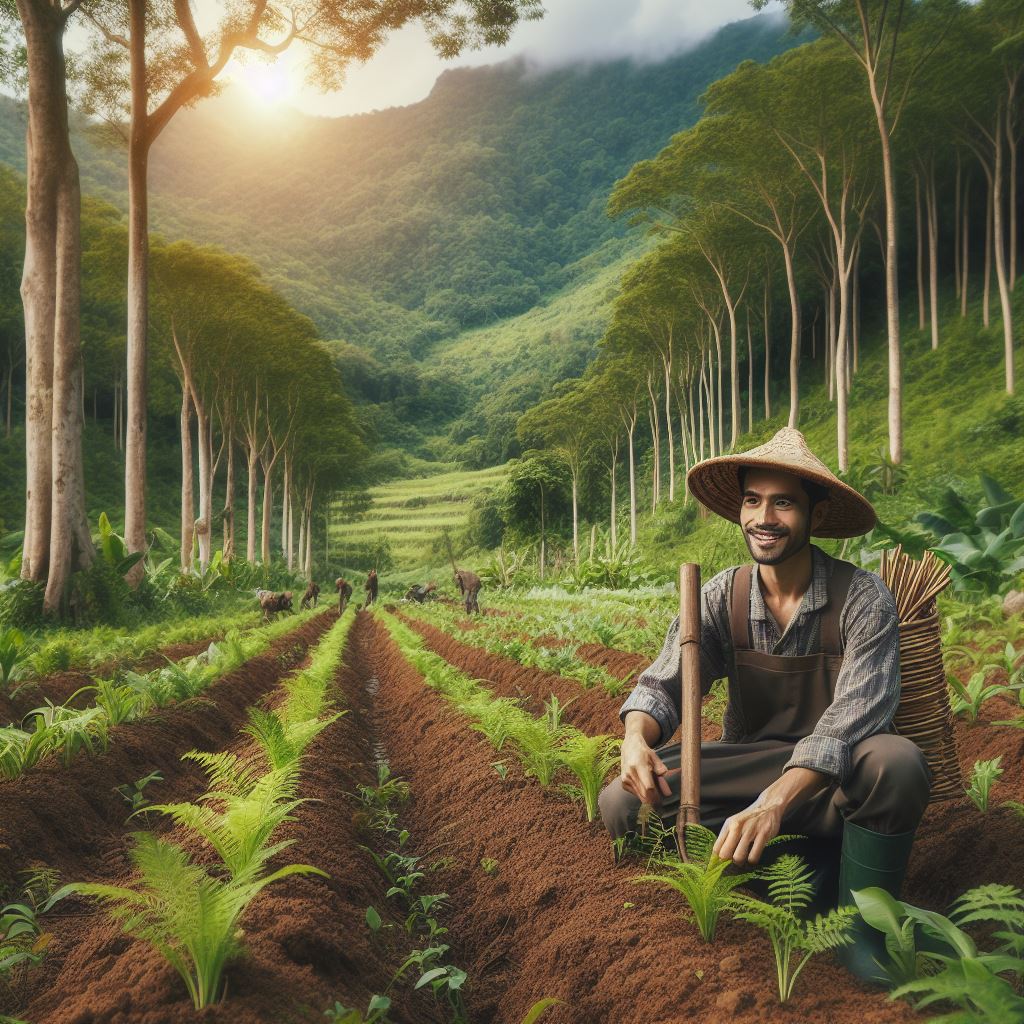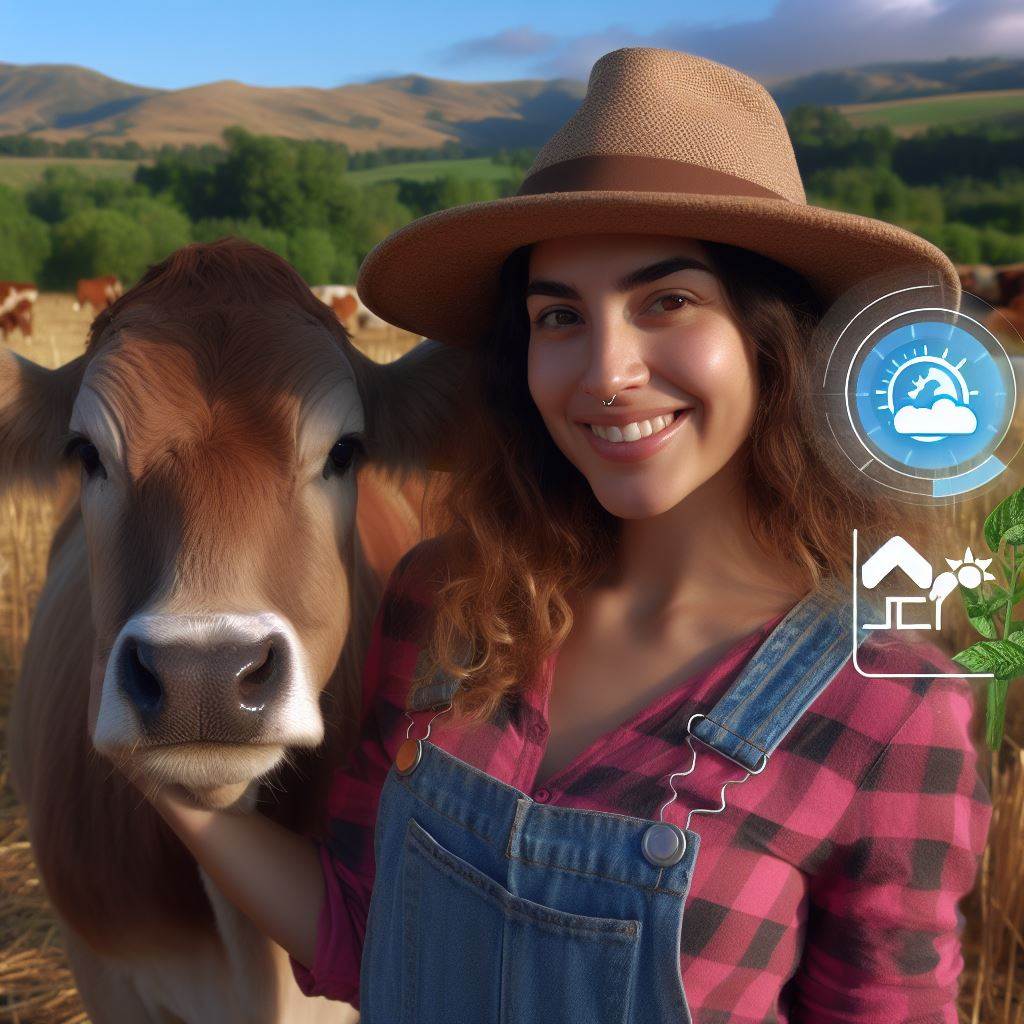Introduction
Let’s Explore Vertical Farming: A Future-Proof Strategy
Vertical farming optimizes land use by growing crops upwards, making it suitable for urban environments where space is limited.
This innovative approach minimizes the need for expansive farmland, conserving valuable resources like water and soil.
Additionally, vertical farming reduces transportation costs and carbon emissions associated with food distribution, promoting environmental sustainability.
Furthermore, vertical farms can operate year-round, independent of seasonal changes and adverse weather conditions, ensuring consistent food production.
By incorporating advanced technologies such as hydroponics and LED lighting, vertical farms maximize crop yields while minimizing resource consumption.
In essence, vertical farming aligns with the principles of sustainability by promoting efficient resource utilization, reducing environmental impact, and ensuring food security in the face of population growth and climate change.
As such, it represents a forward-thinking solution for addressing the challenges of the future agricultural landscape.
Benefits of Vertical Farming
Vertical farming, a revolutionary agricultural method, holds immense potential in addressing modern challenges faced by traditional farming practices.
Let’s delve into the myriad benefits it offers:
Maximizing Land Efficiency
- Vertical stacking of crops allows for multiple layers of cultivation in a single area, maximizing land use efficiency.
- Utilizing unused urban spaces, such as rooftops and abandoned buildings, for farming helps make the most of available land.
Reducing Resource Consumption
- Vertical farming significantly reduces water usage compared to traditional methods, as water is recirculated within the system.
- With controlled indoor environments, vertical farms require minimal pesticide and fertilizer inputs, reducing resource consumption and environmental pollution.
Eliminating Transportation and Logistical Challenges
- Produce grown in vertical farms can be located closer to urban centers, reducing transportation distances and ensuring fresher products for consumers.
- By eliminating the need for long-distance transportation, vertical farming helps lower carbon emissions, contributing to environmental sustainability.
Vertical farming’s ability to optimize land use, conserve resources, and streamline logistical processes makes it a promising solution for the future of agriculture.
By maximizing land efficiency through vertical stacking, it addresses the challenge of limited arable land, especially in densely populated urban areas.
Additionally, repurposing unused urban spaces for farming helps alleviate pressure on rural agricultural land while bringing food production closer to consumers.
Moreover, vertical farming significantly reduces resource consumption. With lower water usage and minimal reliance on pesticides and fertilizers, it promotes environmental sustainability.
This is particularly crucial in the face of dwindling water resources and concerns about chemical runoff from conventional agriculture.
Transform Your Agribusiness
Unlock your farm's potential with expert advice tailored to your needs. Get actionable steps that drive real results.
Get StartedFurthermore, vertical farming eliminates many transportation and logistical challenges associated with traditional farming.
By growing produce closer to urban areas, it reduces the need for long-distance transportation, resulting in fresher products for consumers.
Additionally, the decreased transportation distances help lower carbon emissions, contributing to efforts to combat climate change.
Basically, vertical farming offers a multifaceted approach to addressing the challenges of modern agriculture.
Its ability to maximize land efficiency, reduce resource consumption, and eliminate transportation challenges makes it a promising strategy for ensuring food security and sustainability in the future.
As technology continues to advance, vertical farming is poised to play an increasingly important role in feeding our growing global population while minimizing environmental impact.
Read: Organic Farming: A Climate Resilient Choice

Technological Advancements in Vertical Farming
Vertical farming has gained significant attention in recent years as a sustainable solution to address the challenges faced by traditional agriculture.
One of the key factors contributing to the success of vertical farming is the continuous technological advancements in various aspects of the practice.
This section will explore the technological advancements in vertical farming that have revolutionized the way crops are grown in controlled environments.
Advanced LED lighting systems
Vertical farming relies on artificial lighting to provide the necessary light energy for plants’ photosynthesis process.
Advanced LED lighting systems have emerged as the preferred lighting technology for vertical farms due to their numerous benefits.
These benefits include the ability to tailor the light spectrum according to different crops’ specific needs, resulting in optimal plant growth and yield.
LED lights also offer energy efficiency and cost-effectiveness, as they consume significantly less energy compared to traditional lighting systems.
Automated hydroponic systems
Hydroponics, a soilless farming technique, is widely used in vertical farming.
Automated hydroponic systems have revolutionized crop production by enabling precise water and nutrient delivery to plants.
These systems use sensors and smart controllers to monitor and maintain the ideal growing conditions, ensuring plants receive the necessary nutrition at the right time.
This automation minimizes the need for manual labor, leading to higher productivity and reduced labor costs.
Artificial intelligence and data analysis
Artificial intelligence (AI) and data analysis have become integral components of modern vertical farming practices.
AI-powered technology allows for real-time monitoring of plant health and growth patterns.
Sensors and cameras can assess various factors such as temperature, humidity, and nutrient levels, providing valuable insights into plants’ well-being.
This information is then analyzed using advanced algorithms to optimize crop production.
AI systems can identify potential issues or anomalies, enabling prompt action to be taken to prevent crop damage or loss.
The integration of AI and data analysis into vertical farming also enables predictive analytics.
Showcase Your Farming Business
Publish your professional farming services profile on our blog for a one-time fee of $200 and reach a dedicated audience of farmers and agribusiness owners.
Publish Your ProfileBy analyzing historical data, AI algorithms can make accurate predictions about crop growth, yield, and even disease outbreaks.
This information can help farmers optimize their production strategies, plan for future demands, and minimize risks.
Therefore, technological advancements in vertical farming, such as advanced LED lighting systems, automated hydroponic systems, and the integration of AI and data analysis, have significantly enhanced the efficiency and productivity of this innovative farming method.
These advancements offer tailored light spectrum for plants, precise nutrient delivery, minimized manual labor, and real-time monitoring, resulting in optimal crop growth and increased yields.
As technology continues to evolve, it is expected that vertical farming will become even more sustainable and economically viable, offering a future-proof strategy for food production.
Read: High-Tech Farms: Sensors & Climate Change
Successful Case Studies
In the pursuit of future-proof strategies, several case studies have emerged to showcase the success and potential of vertical farming.
These examples demonstrate how the application of this innovative agricultural method can revolutionize food production, enhance sustainability, and address crucial challenges faced by the farming industry.
The Plant, Chicago
One remarkable case study is The Plant in Chicago.
They have effectively repurposed industrial spaces for vertical farming, taking advantage of previously unused areas.
By optimizing limited resources, The Plant maximizes their efficiency and yields, creating a sustainable model for urban agriculture.
Additionally, their emphasis on local production ensures that their food travels shorter distances, reducing the carbon footprint associated with transportation and contributing to a more environmentally friendly approach.
AeroFarms, New Jersey
Another impressive case study is AeroFarms in New Jersey.
Through the implementation of aeroponics, they have successfully scaled indoor vertical farming to new heights.
This technique involves growing plants in a misty environment without soil, using only nutrients delivered through water.
AeroFarms achieves year-round harvests, as their controlled environment eliminates dependence on seasonal factors.
This consistency allows for a stable supply of fresh produce, and their increased crop yield contributes to greater food security.
Sky Greens, Singapore
Singapore’s Sky Greens is another notable success story.
With limited land availability in the highly urbanized city-state, Sky Greens has overcome this challenge by implementing vertical rotating systems.
These systems allow plants to grow on vertical towers that rotate, ensuring an even distribution of sunlight and efficient use of space.
With this innovative solution, Sky Greens addresses land scarcity issues, enabling sustainable food production within urban areas.
Their approach ensures food security by reducing dependence on imports and promoting local self-sufficiency.
The diverse success stories of The Plant, AeroFarms, and Sky Greens serve as inspiring examples of how vertical farming can be a future-proof strategy.
The utilization of repurposed industrial space, the adoption of innovative techniques like aeroponics, and the implementation of vertical rotating systems all contribute to enhanced sustainability, increased yields, and improved food security.
These case studies highlight the enormous potential of vertical farming to revolutionize the way we produce and consume food, paving the way for a more sustainable and resilient future.
Read: Cover Crops: Heroes in Climate Battle
Discover More: Climate-Smart Farming Techniques
Potential Challenges and Future Outlook
Vertical farming undoubtedly offers exciting possibilities for the future, but it also faces potential challenges that need to be addressed in order to ensure its long-term success.
High initial investment costs
One of the major challenges is the high initial investment costs.
Establishing a vertical farm requires significant capital for infrastructure, equipment, and technological advancements.
However, advancements in technology, such as innovative lighting systems and automation, along with economies of scale, can help lower these costs over time.
As the industry continues to grow and develop, there is a strong potential for reduced investment requirements, making vertical farming more accessible to a wider range of entrepreneurs and investors.
Regulatory hurdles and public acceptance
Another obstacle to overcome is regulatory hurdles and public acceptance.
Vertical farming involves unconventional agricultural practices that may require new regulations and guidelines to ensure food safety and quality.
Collaborating with policymakers and industry stakeholders to establish appropriate regulations and standards is crucial.
Additionally, educating the public about the advantages of vertical farming, such as year-round production, minimal land usage, and reduced water consumption, will help build trust, dispel misconceptions, and gain acceptance.
Expanding vertical farming to developing countries
Expanding vertical farming to developing countries presents both challenges and opportunities.
Addressing food insecurity and malnutrition is a pressing issue in many developing nations.
Vertical farming can provide a sustainable solution by producing fresh and nutritious food locally, reducing reliance on imports, and increasing food self-sufficiency.
Empowering local communities through sustainable agriculture practices not only improves access to healthy food but also enhances economic development and resilience.
Showcase Your Farming Business
Publish your professional farming services profile on our blog for a one-time fee of $200 and reach a dedicated audience of farmers and agribusiness owners.
Publish Your ProfileIn short, while vertical farming has the potential to revolutionize agriculture and address numerous challenges such as limited land availability and climate change, it is essential to overcome initial investment costs, tackle regulatory obstacles, and gain public acceptance.
Moreover, expanding vertical farming to developing countries can significantly contribute to addressing food security and fostering sustainable development.
By addressing these challenges, vertical farming can truly become a future-proof strategy for a more resilient and food-secure world.
Read: Protecting Soil in a Warmer World
Find Out More: Climate Change: New Challenges for US Farmers
Conclusion
Recap of the benefits and potential of vertical farming
Vertical farming offers numerous benefits such as increased crop yield, reduced water and land usage, and year-round production.
Emphasize the importance of embracing future-proof strategies
In a world facing climate change and a growing population, it is crucial to adopt sustainable practices like vertical farming to ensure food security and environmental preservation.
Encouragement to explore and support the growing field of vertical farming.
As vertical farming continues to evolve, it is essential for individuals, businesses, and governments to support this innovative approach to agriculture.
By investing in research, development, and implementation, we can revolutionize our food production and create a more sustainable future for all.




